Inside: 9 ways that I raise and teach my toddler Spanish as a nonnative Spanish speaker at home using the MLAH bilingual parenting approach.
Before I became a mother, I knew one thing for certain. My children were going to speak Spanish. Not only were they going to speak Spanish, Spanish was going to be their first language.
Today, I want to share seven tips on how I raise and teach my toddler Spanish as a nonnative speaker.
I hope these tips help you in your bilingual parenting journey. Don’t forget to follow me on Instagram for daily bilingual parenting tips and resources to teach your kids Spanish!
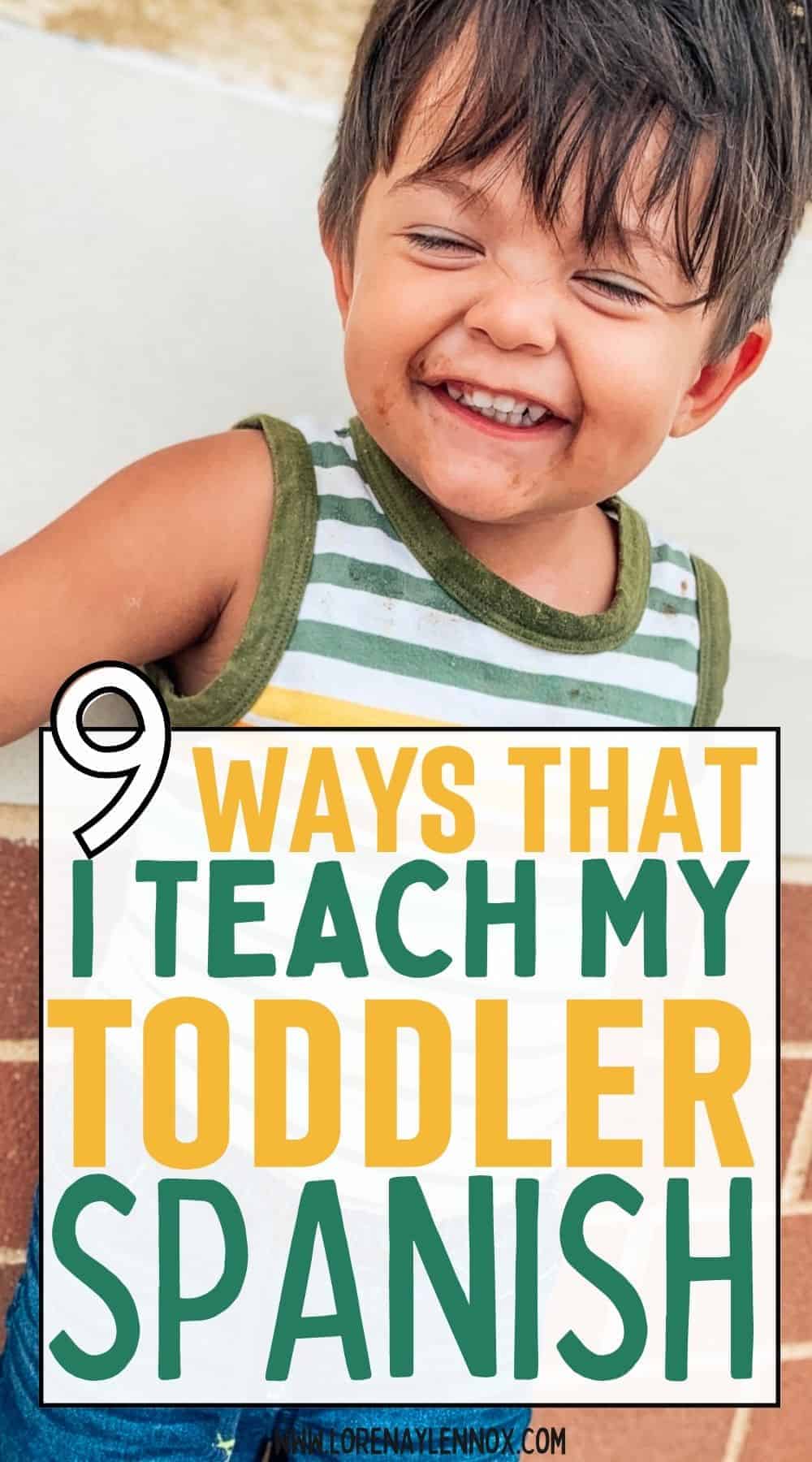
Why do I want to raise my child in Spanish as a nonnative speaker?
Learning languages, Spanish in particular, has been my passion since Spanish 1 class my freshman year of high school.
Since then, I have traveled to many countries in Latin America, received my Bachelors and Masters in Spanish and Latin American studies, and currently, I work as a part-time freelance translator.
Learn more: 12 Ways to Become Fluent in Spanish Outside of the Classroom
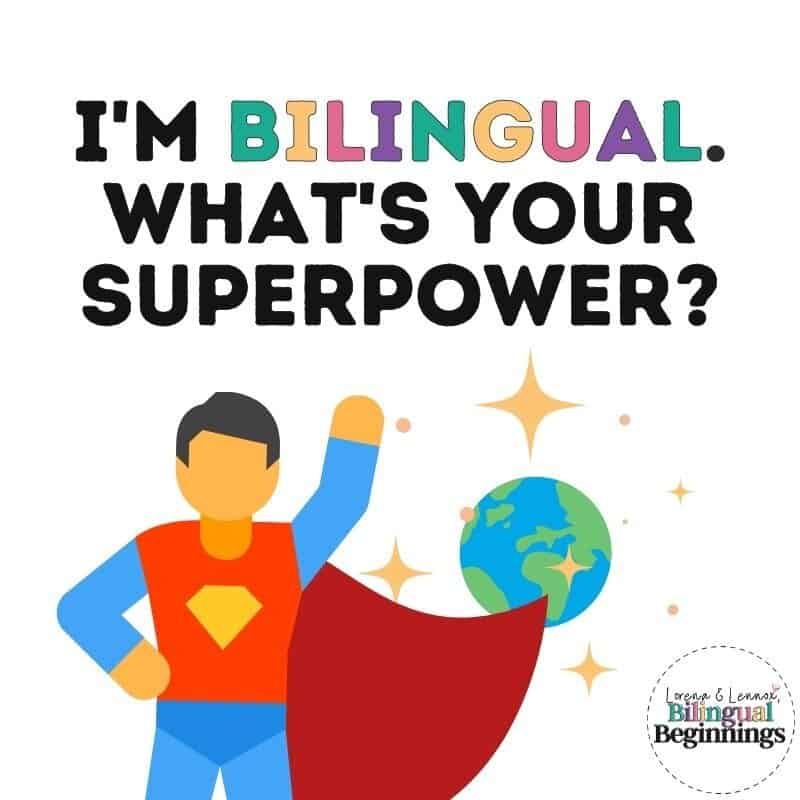
In 2011, I met my Salvadoran partner Carlos and the language became a full-time gig for me. Together we have grown to learn each other’s languages, but most importantly cultures.
From Carlos’ culture, I have learned to LOVE diverse food, this was huge for me because I was a rather picky eater.
- I have a new appreciation for Latin music.
- Learned how to dance— well sort of.
- Acquired new expressions, new behaviors, new values, and the list goes on and on.
- I have genuinely acculturated to this new lifestyle, and because of it, I feel more well-rounded, and I have grown as an individual.
- I want this for my son and my future children.
- Even though Lennox was born in the United States, I never want him to forget his Salvadoran roots.
Related: Learn Spanish Through Music With These Artists
Since Lennox was born, I have done all I can in my power to make sure he speaks Spanish and learns his Papi’s culture. It hasn’t been easy, especially in times of frustration when I most want to express myself in my native language, but let me tell you this, it has been SO worth it.
(Update on 3/10/2021) At now almost four-years-old, Lennox is speaking mostly Spanish, and I have learned so much Spanish myself! Spanish I didn’t even realize I didn’t know! For example, nursery rhymes, onomatopoeia, shapes, among many more. It is fascinating, and that is my absolute motivation for writing this post.
Related: 13 Facts Parents Who Want to Raise a Bilingual Child Need to Know
Now you might be thinking, well he eventually needs to learn English, and don’t doubt it, he will because English is everywhere. It is on the T.V., my family only speaks English, and in September 2019 he will start preschool so he will learn it there as well.
(Update (3/10/2021): Preschool is a huge influence in Lennox’s life. His English is flying high! So much so we are fighting to make sure he speaks only the minority language at home!
Also, he is an absolute clown, and he is the one telling ME to speak in Spanish. Check out his bayucadas no our Instagram page where we post daily!)
Lennox will know very well that in our house, or with Mami or Papi, he will speak in Spanish only.
I know too many people of Latino descent that let Spanish slip away from their children and it truly makes me so sad. Not only should they be proud of their culture and want their children to be bilingual, but also being bilingual is so beneficial for their children.
Benefits of Raising Bilingual Children
In her article, K. Lori Hanson, Ph.D. goes into the advantages bilingual children have. Her research shows that bilingual children:
- Have sharper brain function.
- Have stronger listening skills.
- Are more creative.
- Have a leg up in the future workplace.
- Are better problem solvers.
- Are more open-minded.
- Will gain new perspectives.
- Have expanded social opportunities.
- Form bonds with extended family.
- Can more easily learn another language.
- Will most likely raise bilingual kids.
I want Lennox to have all of these advantages, and there is no better way to do so then to teach him while he’s young. Research shows that “the best time to learn a new language is between birth and age 7.” That’s why I want Lennox to get a great foundation of Spanish first before being thrown out into the English-speaking world.
Below is a list of 7 ways that I am raising my toddler in Spanish as a nonnative speaker
1. ¡Español, español, español, all day long!
I mentioned earlier that since Lennox was born I only speak to him in Spanish. This is called the Minority Language at Home bilingual parenting approach.
This approach works for us, because Carlos speaks Spanish and I do too!
This is a lot easier when we are all together as a family as I have always spoken in Spanish with Carlos.
When it is just Lennox and me, it is a bit more difficult and oftentimes feels unnatural. Regardless I do it and over time it has gotten a lot easier. Practice makes perfect, they say.
Check out three other bilingual parenting methods below:
- One Person One Language Approach
- Mixed Language Strategy
- Time and Place Tips for Raising Bilingual Children
2. Constant communication
Not only do I only always talk to Lennox in Spanish, but I make sure I describe my actions when he is near me.
If I am doing the dishes, I talk to him about how I scrub the dishes. I open interactive dialogue with him so that he can learn the process and daily routines of life.
This is important to do with your children no matter what language you are teaching them. Children are sponges at this age and soak up everything you say to them.
This will also allow them to interact with daily chores and help them be more interested in fulfilling these chores when they are older.
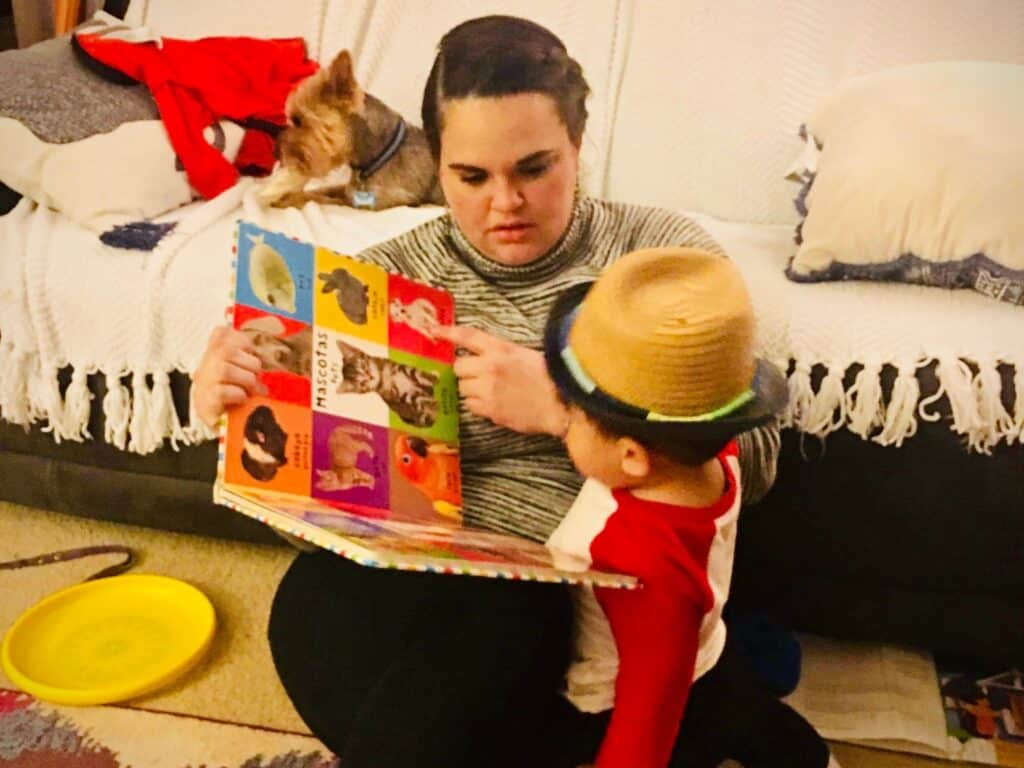
3. Technology will not win
If I am going to put all of my efforts into speaking Spanish to Lennox, you best believe that all the technology is going to follow suit.
Now that we’re at toddler-tantrum-throwing-times, it is really hard to avoid technology because you know, that’s the only time you can sit down for a second, fold the laundry, check your phone, or anything else on your never-ending to-do list. You get my gist.
When we do use technology, it is always in Spanish. Here is a list of THE BEST YouTube channels in Spanish for Kids!
Netflix is another amazing resource because almost all of the kids shows have a Spanish audio option. I love showing Lennox the old 1950’s Disney movies and I love even more that they have Spanish voiceovers.
As for phones, Lennox is just starting to use my iPhone. I set my phone to Spanish so that when I download children’s apps, they are in Spanish.
4. Music
Early on into my Spanish education, I used to listen to Spanish music all the time, it was one of the most influential ways that I learned Spanish outside of the classroom.
Related: Learn Spanish Through Music With These Artists
To understand what was being said, I would print out the lyrics and translate them into English.
Ever since then, Reggaeton, Cumbia, Bachata, Merengue, and so on, have taken over my headphones. Lennox loooooves music, Reggaeton more than I would like him to, but it is so cute to see him start to sing the words and move his hips. He sure does have Latino blood.
Look how he moves those hips!
Lennox has also learned a lot of Spanish and his Salvadoran roots through his food. Check out one of his favorite recipes here: Typical Latin American Shrimp Ceviche
5. Libros, libros y MÁS LIBROS!
I love reading to Lennox and I have spent a pretty penny on buying picture books in Spanish. However, I have gotten a lot of hand-me-down books that are in English. I still utilize these books, but I make up my own stories in Spanish and we talk about the pictures instead.
Related: How to Read to Your Bilingual Toddler in the Minority Language
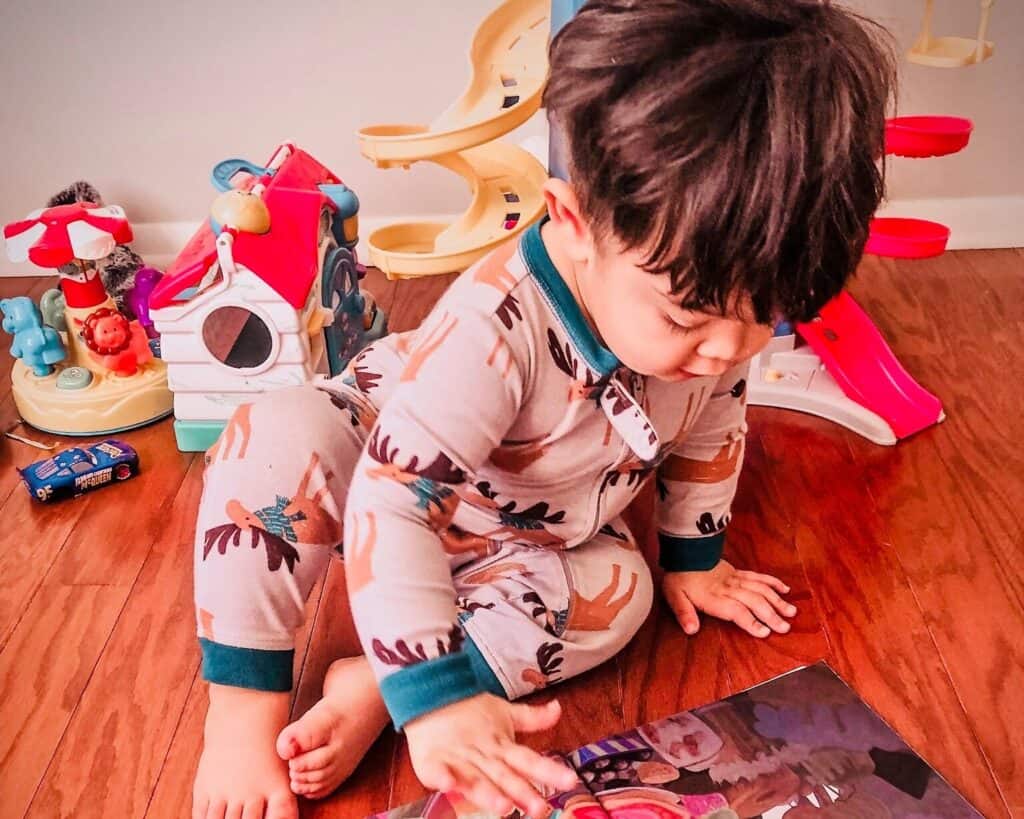
Our favorite book in Spanish is Diós te bendiga y buenas noches By Hanna C. Hall. The pictures are adorable, it talks about bedtime and it has a beautiful rhyme. We actually have turned it into a song that we sing before bed some nights. I would post a video of it but it’s quite embarrassing.
Looking for more books in Spanish, check out these selections of thematic picture books in Spanish!
6. Caretakers.
We don’t have a lot of caretakers for Lennox but when we do, one of our requirements is that they speak Spanish so that Lennox can understand them and not become accustomed to speaking English.
7. Playmates and mommy groups
The same goes for playmates, and I am so happy that I have a lot of Spanish-speaking friends with children. Lennox especially benefits from the older kids who speak to him in Spanish since he is at the stage where he imitates everything.
I also know in my town, on the app Meetup, there are a lot of groups that have bilingual meetup sessions. I have not met up with these groups yet but I would love to one day. The library near me also has sessions for young children in Spanish. I have been meaning to check those out as well.
I hope you enjoyed my tips for how I raise Lennox speaking Spanish as a nonnative speaker.
For more tips of raising bilingual children, visit our bilingual parenting section of the blog!
8. Play-based activities in Spanish
Throughout Lennox’s toddler years, I was always creating play-based activities to do at home.
Play-based activities are excellent for language learning. They allow children to learn new words and practice their minority language in a fun and engaging way.
Check out a few of our play-based activities below:
- Learn different animals and their sounds with this sensory animal washing station.
- Play and learn the different ocean animal vocabulary with this beach sensory bin.
- Practice the Spanish colors with this lego toss and sort.
- Do a STEM activity and learn about hielo y agua with this Disney In Ice Escape Water Table STEM Activity
- Memorize the abecedario with this Don’t Break The Ice Letter Smash.
- Practice roll playing with these DIY Popsicle puppets.
9. Spanish Printables
Last but not least, the older Lennox got, the more he enjoyed some of my homemade, engaging Spanish printables.
I have made a whole range of printables from alphabet printables, number printables to transportation flashcards and body part flashcards! Check out our whole printable selection here.>>>
The majority of the Spanish printables are available for FREE upon subscribing to my weekly newsletter (see below.)
However, I offer more selections on my Etsy Shop that you can check out here. >>>
Keep reading:
- 10 Misconceptions About Raising Bilingual Children
- 13 Facts Parents Who Want to Raise a Bilingual Child Need to Know
- The Best YouTube Channels in Spanish for Preschoolers
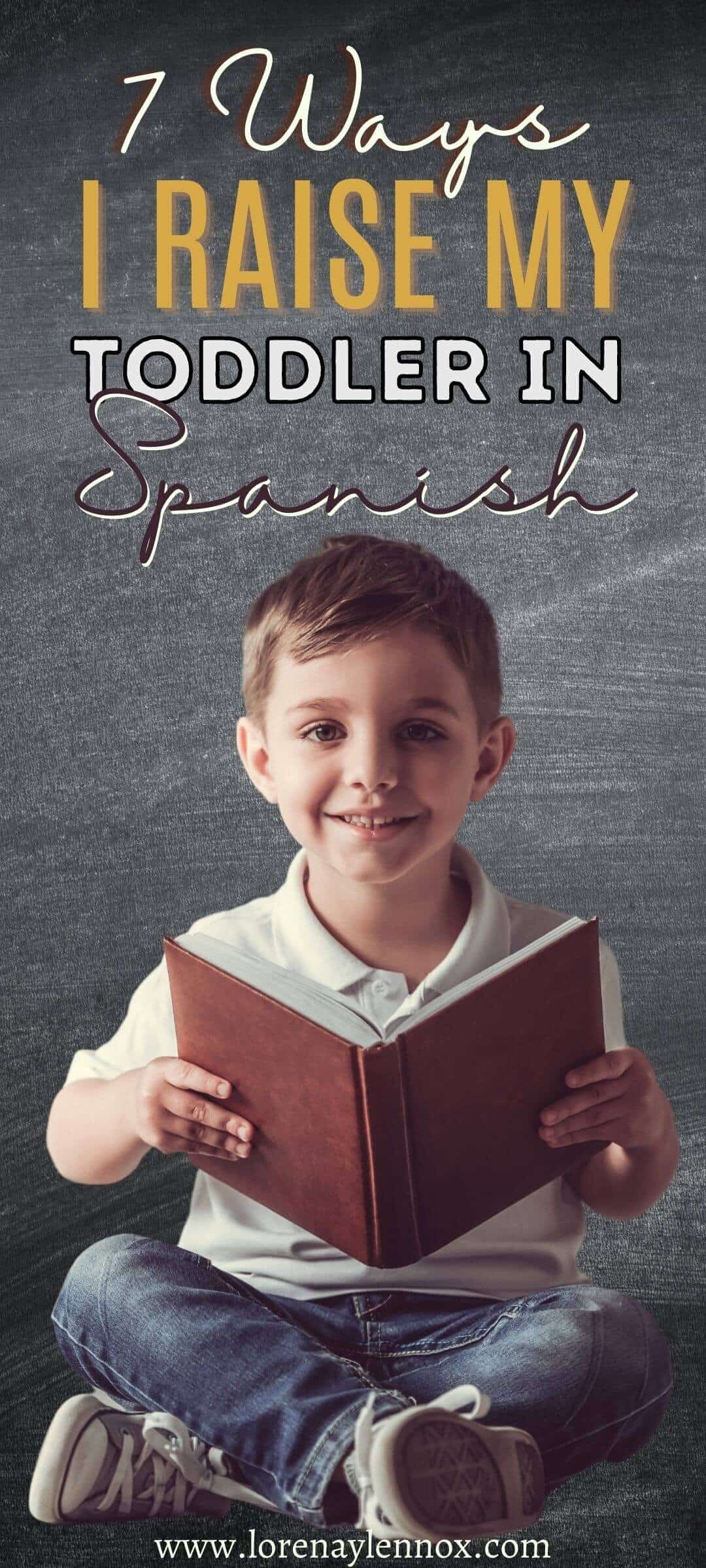
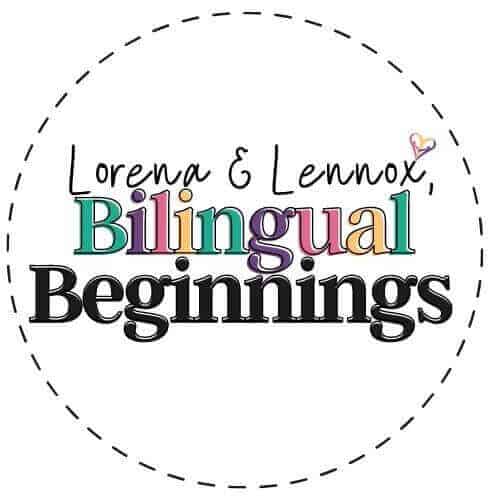
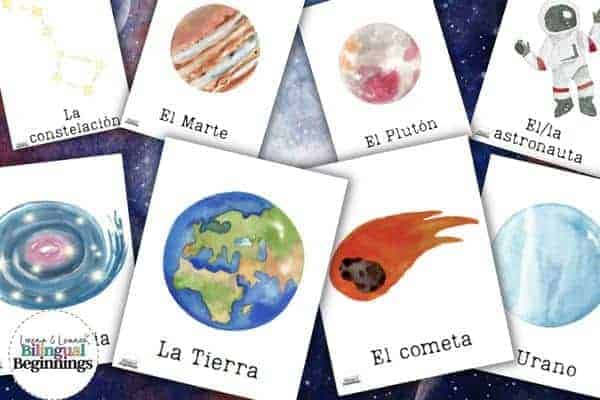
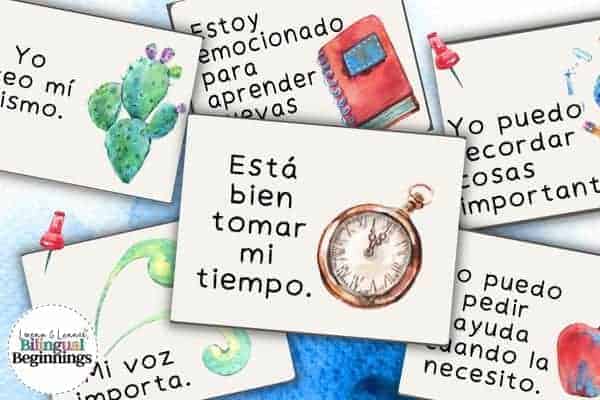
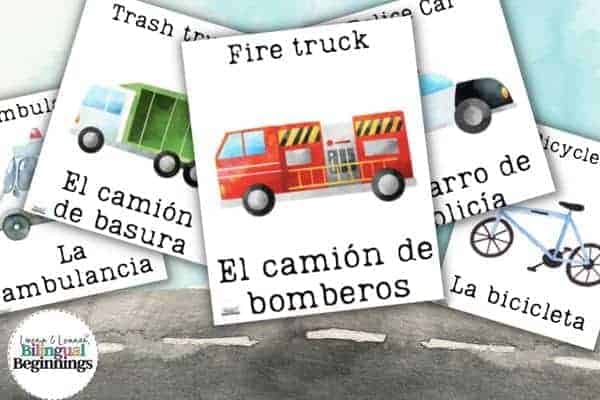
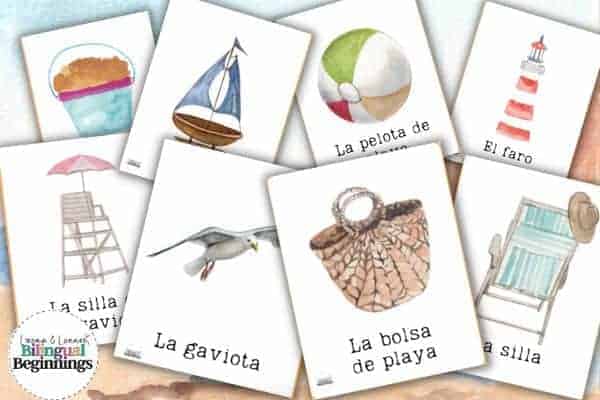

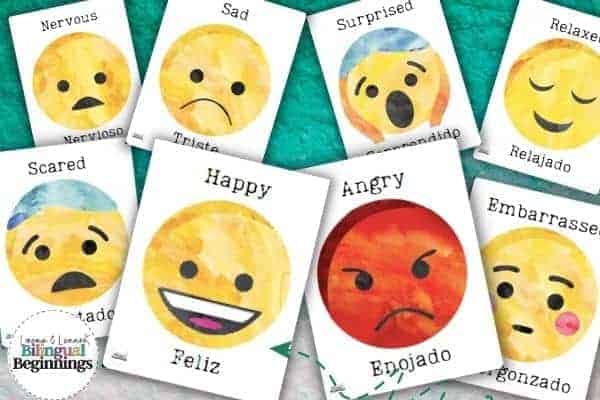
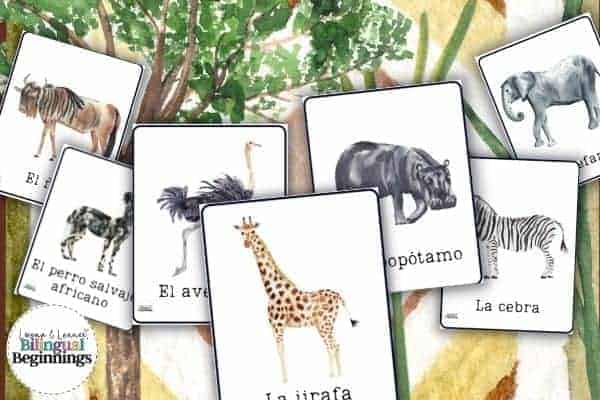
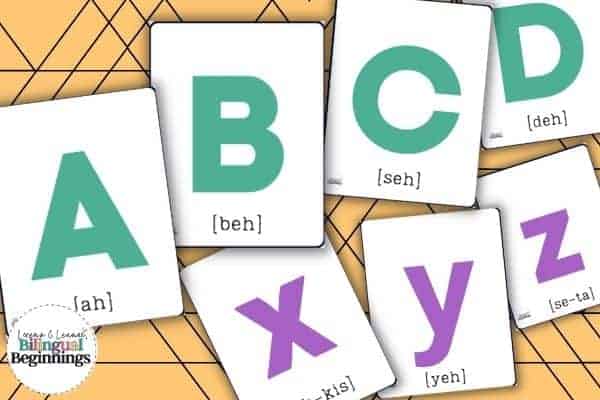
Chelsi Irizarry
Monday 1st of March 2021
I love this and I’m so happy I found your blog! I don’t have kids yet (hopefully in the near future 🤞🏼😊), but our stories are so similar. I’m not a native speaker either, but I started learning Spanish in high school. I went on to get my bachelor’s in Spanish and have traveled to a few Spanish speaking countries, but hands down, the thing that’s really helped me become fluent is my Puerto Rican husband and his family😁 I love the approach you’re taking. #MamiGoals! Lol I subscribed so I can come back to your blog in the future, whenever we’re finally blessed with some bilingual babies ☺️
Lorena Ruprecht
Tuesday 2nd of March 2021
Chelsi,I am so happy you found my blog! I love that we share similar stories!
I hope you can find me on IG or FB too, and if you do, reach out and say hello so I can put a face to your name!!!
Thank you!!
Lorena
Kaylee
Tuesday 9th of June 2020
Hi! Just found your blog yesterday and will definitely be going through your content to see what I can use! Wondering if you happen to have any kids friendly’ Spanish playlists on Spotlight you like to listen to with your son?
Lorena Ruprecht
Wednesday 10th of June 2020
Kaylee, I am so glad you found us! I hope you can find some useful content! I do not currently have any playlists of kid friendly Spanish songs, but I love that Idea and will try to get one out in the next week or so. Thank you for the great idea! If you subscribe, you will receive updates on our bilingual parenting posts =)
Lorena
jordan
Tuesday 3rd of September 2019
I love the idea of raising a bilingual baby! As you mentioned, they will have so many academic advantages in the long run. Great job!
Monica
Tuesday 3rd of September 2019
Fully immersing yourself in the language is the best way to learn it! I only speak English, but am teaching my children how to speak German because it is where my family is from, even though I know very little of it. It's hard to fully immerse them when I am still learning it myself, but it's fun! and honestly, watching and using these children resources for language, I have learned more from them then 4 years of textbooks and language classes!
Suhasini
Tuesday 3rd of September 2019
You are doing a fab job and infact those are the precise steps I had used to teach a native language in India. Now trying to teach him the writing part as well